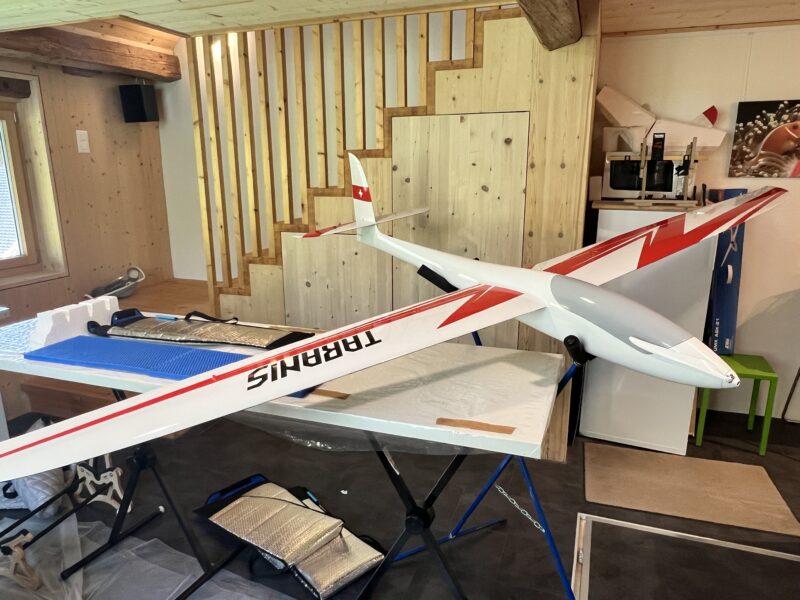Today I dropped my Monnett Monerai off with my mate Andi, who will try to spray paint it over the next few weeks. While waiting for the Monerai to come back from the paintshop and with weather that continues to be really gruesome, it was time for some maintenance work on my glider fleet.
My favourite plane for our local slope (Pfannenstiel – 10 minutes from where I live) is the Chocofly 2.8m Taranis. Its combines speed with stability, loves a bit of ballast and yet is light enough for an easy hand start. Most importantly, it has a tremendous speed spectrum (easy thermalling to really very fast – well over 300kmh – unballasted) and is very uncritical to fly – unlike for instance my Chocofly Kobuz, which is a great glider for heavy slope conditions, but is trickier to fly and doesn’t have the versatility of the Taranis. I was lucky to get one of the first production models of the Taranis when it came out in 2019 and built the prototype with a FES system (6S with our usual Leomotion/Dualsky outrunner). A video of one of the first flight of my Taranis (with information on the setup) can be found here. The flight on the video is without ballast. With a bit of ballast it’s way faster :-).
When I built my Taranis in 2019 the choice of linkage systems for the wing control surfaces was relatively limited and I decided to build my own, using a combination of brass and aluminium. After five years of flying the play on these linkages was too much for my liking. I’d been putting off changing the linkages, but yesterday I decided to upgrade the Taranis to the latest Chocofly Linear Drive System (LDS) – with aluminium servo horns, carbon rudder horns and steel/brass/aluminium connectors. It’s a system that I first built into my Ventus and am very satisfied with – there is zero play on the wing control surfaces and it’s much easier to install than the LDS systems I used earlier.
The hardest part of upgrading the Taranis was removing the old rudder control horns. Fortunately these were made out of aluminium, so I heated them with my soldering rod to melt the epoxy resin glueing them into the control surfaces and prised them out using pliers. After that installing the new carbon rudder control horns wasn’t too hard. The Taranis is now ready for further slope action. Hopefully I get to try out the updated Taranis on our local slope soon.




You must be logged in to post a comment.